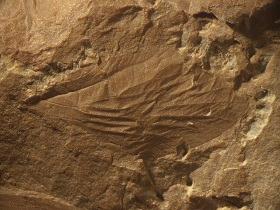Using AI to control energy for indoor agriculture
30 September 2024
Published online 17 October 2013

Newly discovered insect species that lived around 300 million years ago reveal a previously unknown level of diversity in early insects. The five fossils described in Nature represent very early examples of the insects that evolved into beetles, true bugs and hymenopterans (ants, bees and wasps); together the most diverse and numerous of any modern animal group.
When many people think of ancient fossilized insects, large dragonfly-like creatures come to mind. Living in the shadows of these giants were the smaller insects identified by André Nel of the Museum National d'Histoire Naturelle in Paris and colleagues, including Dany Azar at the Lebanese University in Fanar. They suggest that these small specimens were previously overlooked because they are quite hard to discern. The researchers analyse a range of different early insect groups, including four adult insects and a larva found in rocks from the Pennsylvanian period (roughly 323–290 million years ago) in France and Germany. With wings ranging from about 4 mm to 14 mm in length, the ancient creatures are miniatures in comparison with their modern relatives.
These discoveries reveal an unexpected variety among the Pennsylvanian insects, suggesting that the foundations of the most diverse groups of modern insects were already well established in the Pennsylvanian era.
doi:10.1038/nmiddleeast.2013.181
Stay connected: